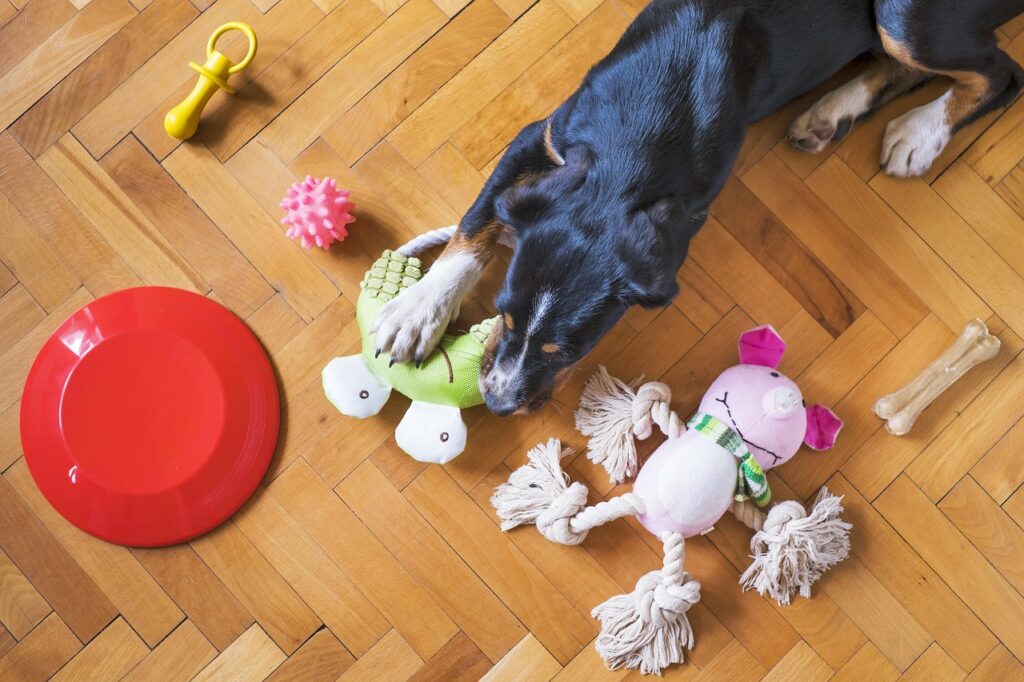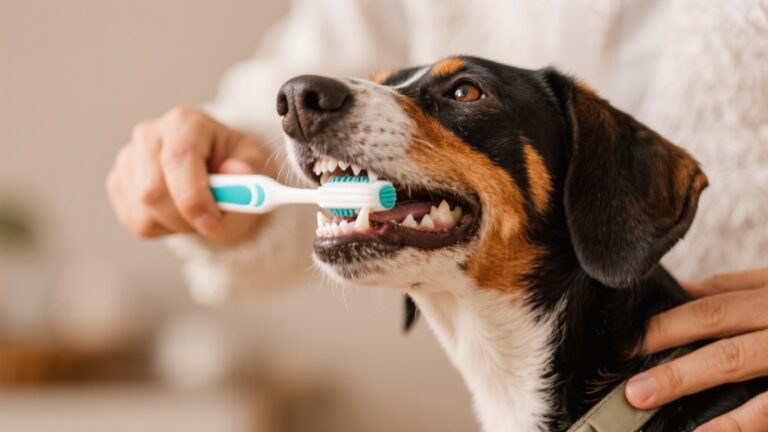Leaving your beloved dog at home while you head to work or run errands can feel heartbreaking. Many pet owners worry about their furry friend’s wellbeing during those long hours of separation.
The good news? With the right strategies and preparation, you can ensure your canine companion stays content, engaged, and emotionally healthy while you’re away.
Separation anxiety affects millions of dogs worldwide, but it doesn’t have to be a permanent problem. By understanding your dog’s needs and implementing proven techniques, you can transform those lonely hours into productive, enjoyable time for your pet.
Understanding Your Dog’s Emotional Needs During Separation
Dogs are naturally social animals that thrive on companionship and routine. When left alone, they can experience a range of emotions from mild boredom to severe anxiety disorders. Recognizing the signs of distress is crucial for addressing the problem effectively.
Common signs your dog struggles with alone time include excessive barking, destructive chewing, scratching at doors, house soiling accidents, and pacing. These behaviors aren’t acts of spite but rather expressions of genuine emotional distress.
The key to helping your dog cope lies in meeting their fundamental needs: mental stimulation, physical exercise, comfort, and security. When these needs are satisfied, most dogs can adapt to spending several hours alone without significant stress.
Pre-Departure Preparation Strategies
Establish a Consistent Morning Routine
Creating a predictable schedule helps reduce your dog’s anxiety about your departure. Start your morning routine 30-60 minutes before leaving, including activities like feeding, quick bathroom breaks, and brief play sessions.
Consistency is vital here. Dogs thrive when they know what to expect, so try to follow the same sequence of events each morning. This predictability helps them mentally prepare for your absence.
Exercise Before You Leave
A tired dog is typically a well-behaved dog. Engaging in vigorous physical activity before departure helps burn excess energy that might otherwise manifest as destructive behaviors.
Consider these pre-work exercise options:
- 20-30 minute brisk walks
- Fetch sessions in the backyard
- Interactive play with rope toys or balls
- Brief training sessions with treats
- Mental challenges like hide-and-seek games
The goal is to provide enough stimulation that your dog feels satisfied and ready to rest during your absence.
Creating an Enriching Environment
Set Up a Comfortable Safe Space
Designate a specific area where your dog feels secure and comfortable. This might be their favorite room, a cozy corner with their bed, or a properly sized dog crate if they’re crate-trained.
The space should include:
- Fresh water in a spill-proof bowl
- Comfortable bedding or blankets
- A few favorite toys
- Something that smells like you, such as an old t-shirt
Provide Mental Stimulation Through Puzzle Toys

Puzzle feeders and interactive toys are excellent tools for keeping your dog’s mind engaged. These devices challenge your pet to work for treats or kibble, providing hours of entertainment.
Popular enrichment toys include:
- Kong toys stuffed with peanut butter or treats
- Snuffle mats that hide small treats
- Puzzle boards with sliding compartments
- Treat-dispensing balls
- Frozen lick mats with yogurt or wet food
Rotate these toys regularly to maintain your dog’s interest and prevent boredom.
Consider Background Noise
Many dogs find comfort in ambient sounds that mask outside noises and provide a sense of companionship. Dog television channels, classical music, or white noise machines can create a calming atmosphere.
Studies show that classical music and specially designed canine music can reduce stress levels in dogs. Avoid loud or jarring sounds that might increase anxiety.
Addressing Separation Anxiety
Gradual Desensitization Training
If your dog shows signs of severe separation anxiety, gradual desensitization can help. Start by leaving for very short periods (5-10 minutes) and gradually increase the duration as your dog becomes more comfortable.
The process involves:
- Practice departure cues without actually leaving
- Leave for extremely brief periods initially
- Gradually extend the time away
- Return before your dog becomes distressed
- Avoid making a big fuss when leaving or returning
Professional Training Solutions
For severe cases, consider working with a certified dog trainer or animal behaviorist. These professionals can develop customized behavior modification plans tailored to your dog’s specific needs.
Positive reinforcement techniques work best for building confidence and reducing anxiety. Professional trainers can teach you effective methods for helping your dog develop independence.
Technology Solutions for Modern Pet Parents
Pet Cameras and Monitoring Systems
Pet cameras allow you to check on your furry friend throughout the day and even interact with them remotely. Many models feature two-way audio, treat dispensers, and smartphone alerts.
Benefits of pet monitoring include:
- Peace of mind for worried owners
- Ability to catch and address problems quickly
- Remote interaction through voice commands
- Documentation of your dog’s behavior patterns
Automatic Feeders and Water Dispensers
Automatic pet feeders ensure your dog receives meals on schedule, even during long workdays. Some models can be programmed for multiple small meals, which aids digestion and provides something to look forward to.
Water fountains encourage proper hydration and can be more engaging than static water bowls.
Social Interaction and Companionship
Doggy Daycare Options
Professional dog daycare facilities provide socialization, exercise, and supervision for dogs whose owners work long hours. Quality daycare centers offer structured activities, trained staff, and safe environments for dogs to interact and play.
When choosing daycare, look for:
- Proper licensing and insurance
- Clean, well-maintained facilities
- Appropriate dog-to-staff ratios
- Vaccination requirements for all dogs
- Structured activities and rest periods
Dog Walking Services
Professional dog walkers can provide midday exercise and bathroom breaks, breaking up long periods of solitude. This service is especially valuable for young puppies, senior dogs, or pets with medical conditions requiring frequent outdoor access.
Nutrition Considerations for Home-Alone Dogs
Proper nutrition timing can impact your dog’s comfort and behavior during alone time. Consider these feeding strategies:
- Provide breakfast 30-60 minutes before leaving
- Use puzzle feeders to extend meal times
- Avoid large meals right before departure to prevent digestive issues
- Ensure constant access to fresh water
- Save special treats for departure to create positive associations
Special Considerations for Different Life Stages
Puppies and Young Dogs
Puppies under six months should not be left alone for more than 2-3 hours due to their need for frequent bathroom breaks and socialization. Young dogs benefit from:
- Crate training for safety and security
- More frequent meals and water breaks
- Extra mental stimulation through training
- Gradual introduction to alone time
Senior Dogs
Older dogs may have different needs when left alone, including:
- More comfortable bedding for joint health
- Easier access to food and water
- Medication schedules that align with your absence
- Consideration for cognitive changes that might increase anxiety
Dogs with Special Needs
Dogs with medical conditions, disabilities, or behavioral challenges may require customized care plans. Work with your veterinarian to ensure their specific needs are met during your absence.
Creating Long-Term Success
Keeping your dog happy while you’re away requires ongoing attention and adjustment. Monitor your pet’s behavior, stress levels, and overall wellbeing regularly. What works today might need modification as your dog ages or your schedule changes.
Remember that some trial and error is normal. Every dog is unique, and finding the perfect combination of strategies may take time. Be patient with both yourself and your furry friend as you work together to create a sustainable routine.
Your four-legged family member deserves to feel loved and secure, even when you can’t be physically present. With proper preparation, engaging activities, and attention to their emotional needs, you can ensure those hours apart are just a small pause in your shared adventures together.






